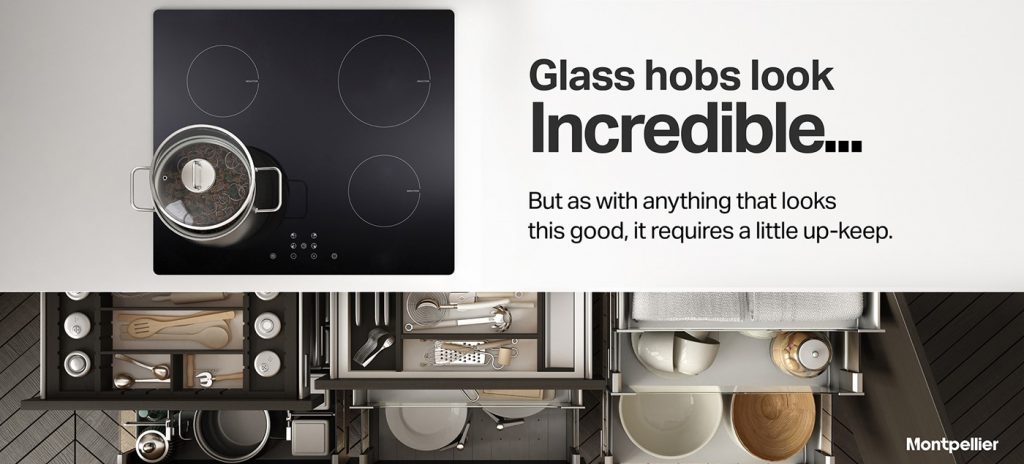Glass Hob Essential Quick Guide

Glass hobs and cooker tops both ceramic and induction are sleek, stylish and shiny. All of which are part of their appeal. But how do you keep them looking this way and avoid early wear and tear?
Advice isn’t always given on how to prolong the smooth appearance of your glass hob and owners are frequently left disappointed when they become easily scratched and marked.
As with anything flawless, it requires a little TLC and maintenance to keep it looking spotless for the duration of its life.
Just as cooking on induction is different to cooking on gas or solid plate, so needs to be the method in which we cook.
Here, we will give you some advice on how to cook on these surfaces in the hope of avoiding unnecessary scratching and marking.
Glass hobs, as with anything glass, are easily marked and scratched if there is an abrasion connected to them.
A pan, if shaken, slid or placed without care, is an abrasive.
We are all familiar with the images of chefs shaking pans (often cooking on gas) resulting in turning and flipping ingredients over a high heat. This is something many of us do. It’s sustainable to do on a gas or solid pate hob where the material is more suitable for this kind of cooking, but it’s not suitable on glass.
Think of your glass hob as you would the screen of your smart phone.
You wouldn’t drag something heavy and metal across the glass screen, would you?

5 Top Tips for cooking on Glass
- Do not slide or shake your pans. Sliding, shaking or rough placement of pans will scratch and mark the surface of your glass hob.
- Gently lift and place pans onto the hob zones reducing the risk of marks or scratches.
- Use pots and pans with a smooth base when cooking. If cooking on induction the same applies but you will need to use induction-compatible pans. It’s suggested that for ceramic hobs, pans with stainless steel bases are the best.
- Wipe up spills as soon as they’re cool enough to safely wipe away. Sugary spills in particular, can cause pitting if left on the surface.
- Keep it clean even when not in use. The hob doesn’t have to be hot to get marked.
Clean with a smooth soft cloth, do not use a scourer or abrasive sponge.

Even with the best care and attention, accidents do happen so head over to our glass hob cleaning guides for advice on the best way to bring your hob back to life if it has become stained.
Ceramic Hob Cleaning Guide
Induction Hob Cleaning Guide
For more Montpellier Recommendations, head to Twitter and search for the hashtag #MontpellierRecommends.
*These are only recommendations and not official guidance. Please refer to the manufacturers manual for your specific make and model to use correctly and safely. We are not held responsible for damage caused. Refer to your manual.
